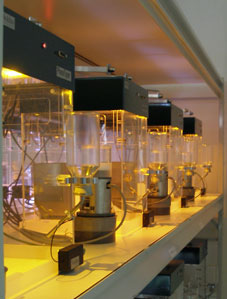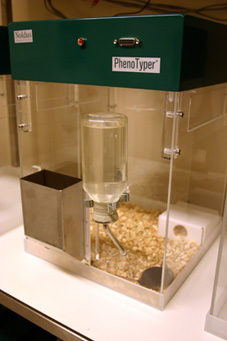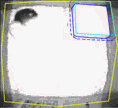
1 Home Cage Assessment
1.1 How is behavior research normally carried out?
The conventional practice in behavior research relies on animals that are living in home cages stored in racks and that are occasionally transported to a room that accommodates a test apparatus; the animals are taken out of their home cage and placed in the test apparatus.
1.2 What are the drawbacks of this practice?
1.2.1 Productivity
A typical experiment consists of multiple pre-acquisition (habituation or training) and multiple acquisition trials. If an experiment contains for instance 24 animals, the total number of trials may for instance be 144 in total. If each trial lasts for instance 30 minutes, the labor time required for handling the animals and acquiring the data (either manually or controlling recording tools) would equal approximately 2 weeks. Multiple behavioral tests are normally performed to avoid misinterpretation of the data obtained with one test only. Hence animals are run through a battery of tests, thus easily multiplying labor time by for instance 3 (= 6 weeks). Moreover, behavioral tests are frequently performed by more than 1 experimenter.
1.2.2 Standardization
All variation in behavior can ideally be explained by the manipulation of an experimental variable (e.g. administration of a drug and/or confronting the animal with a task). In reality, the recorded behavior is also explained by multiple interacting factors from the past as well as those present during the assessment. Regarding the factors that are present during the assessment, differences can occur in experiment protocols, test apparatus, experimenters, room facilities, time points, transportation, both within and between animals and both within and between laboratories. Even the slightest difference can cause unwanted variation in behavioral data and thus aversively affect the reliability of the results.
1.2.3 Refinement
Animals are almost always assessed at multiple time points to take account of the dynamics of an experimental variable. Typically, assessment at each time point takes place for only a short duration; handling to and from the test environment is required; often the assessment itself is carried out by an experimenter; and the timing of assessment is defined by the experimenter’s agenda which is typically during the animal’s inactive phase. These factors lead to “snapshot” data results of an animal that might very well have displayed a stress response to the situation. Hence abnormal behavior elicited by the experimental variable might be covered and abnormal behavior caused by the situation might be induced.
1.3 What is home cage assessment?
With home cage assessment, the assessment of behavior does not take place in a context where animals are frequently transferred from the home cage to the test apparatus and vice versa. Instead, assessment takes place fully automatically and in a home cage environment.
1.4 How can this practice improve behavior research?
1.4.1 Productivity
The 6 weeks of labor time (real time, not lead time) that is normally required for handling animals and acquiring data during a hypothetical experiment is not required with home cage assessment:
· Animals can stay in the same environment where they are assessed and acquisition of data is performed automatically
· Ideally multiple behavioral measurements or tests are performed in sequence or in parallel to obtain a more thorough understanding of the behavior displayed; thus the test battery is performed in one and the same environment
· Animals are no longer assessed one after another but instead are automatically assessed simultaneously in multiple home cage environments
1.4.2 Standardization
The same benefits that are mentioned under 2.4.1 also reduce variation that is related to the experimental procedure:
· Human experimenter(s) is not required for animal handling and data acquisition
· All tests and measurements take place in one and the same environment
· Because assessment of multiple animals can take place simultaneously, the timing conditions are equal for these animals
1.4.3 Refinement
Assessment is no longer fragmented and based on short moments, nor flawed by an animal’s stress response:
· Assessment takes place in a familiar environment and without the disturbing presence of humans
· Testing (stimuli presentation) can take place during the animal’s active phase of the day
· Assessment takes place continuously for days in a row; besides experimentally induced behavior (stimuli presentation), baseline behavior can be assessed thoroughly
Back to 'Project'

 |
 |
